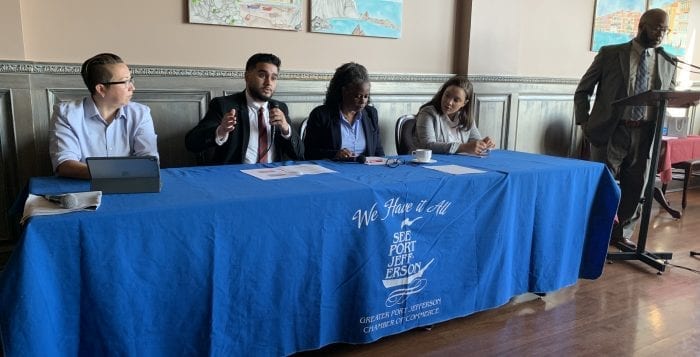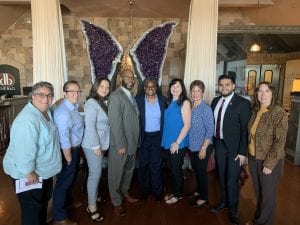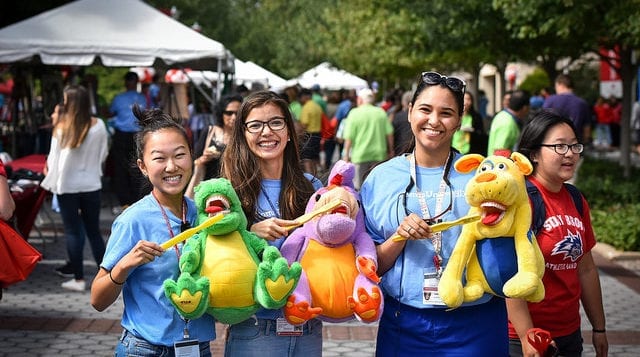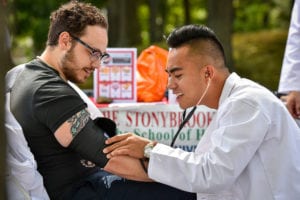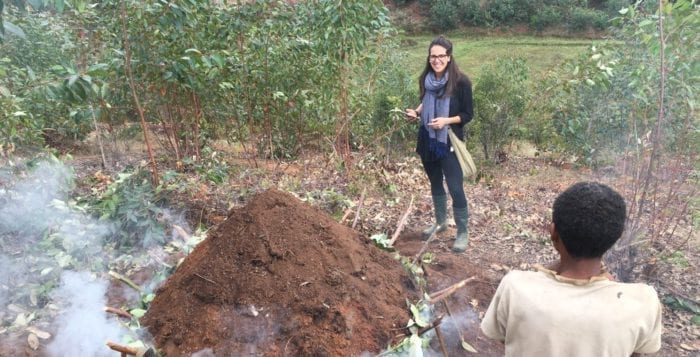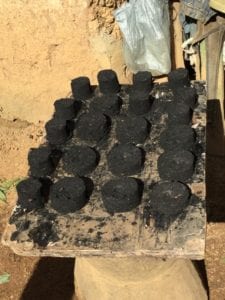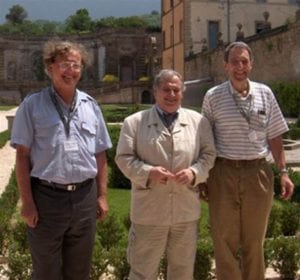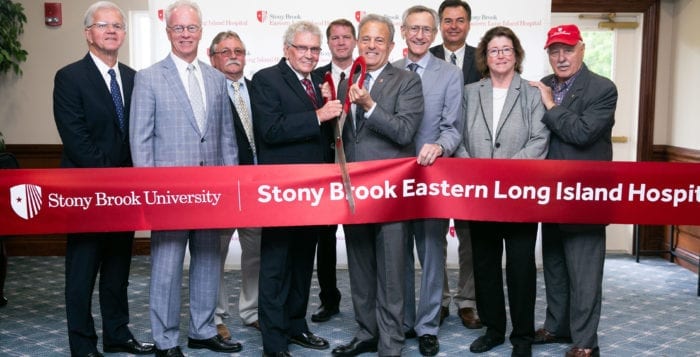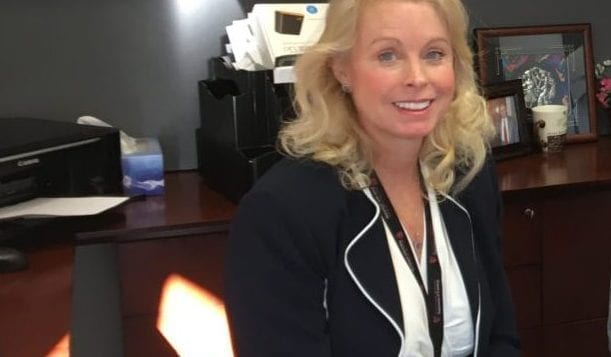Stepping into the main lobby of the new Stony Brook Children’s Hospital, which is slated to open for patient care Nov. 17, it’s apparent that young patients will come first. The downstairs lobby is decorated in soothing tones with a fun nautical theme and one wall features a live feed of fish swimming at the Long Island Aquarium.

In anticipation of the Nov. 17 opening, Stony Brook Medicine held a ribbon-cutting at the site with staff and elected officials in attendance Oct. 17. According to Stony Brook Medicine, the 71,500-square-foot, 114-bed hospital will be the only children’s hospital with single-patient rooms on Long Island.
“We’re really trying to get everything into a child-friendly environment, and this is sort of like the icing on the cake to have our building and to get the pediatric inpatients out from the 11th floor of what is predominantly an adult hospital into this proper space that was designed for kids and their families,” said Dr. Margaret McGovern, professor of pediatrics and physician-in-chief at Stony Brook Children’s Hospital, during a tour and interview two days before the ribbon-cutting.
With a full-service health care program that includes a Level 1 pediatric trauma center, neonatal intensive care unit and more, McGovern said Stony Brook Medicine treats an array of pediatric conditions.
“In general the acuity is high,” she said. “These are kids who really need to be in the hospital. It’s everything from an infection to a broken bone.”
McGovern said the single-bed rooms will provide infection control, comfort, privacy and security. The children’s hospital will be located on floors 4, 5, 6 and 7 in the new Medical and Research Translation building, also known as MART, which combined with using wristbands with devices, will provide extra security for children.
Each patient’s room will have a pull-out sofa for parents to sleep, refrigerator, safe and workspaces for both families and hospital staff. Each room also has a private bathroom with a shower that is wheelchair accessible.

Dr. Carolyn Milana, interim Chair in the Department of Pediatrics, said that the single-patient rooms will allow medical staff to easily have private conversations with families, as the current rooms have two patients each and can only be divided with a curtain. She said at times medical teams have to step out of a room to have a conversation with parents.
“This will allow the whole team to come in and really have a conversation with the family in private, and it’s quieter,” Milana said.
The children will also have a remote to control the lighting over artwork hung on the walls, and medical teams will be able to pull up records and patient care educational materials right up on the room’s television screen.
Maureen Cole, RN, associate director of nursing, Children’s Hospital and Women’s Services, said that the rooms were designed after receiving feedback from families on an advisory council.
“They were very instrumental in some of the additions that we have made, and then the children gave a lot of feedback, too, because we have a youth advisory council who have been touring the building,” she said.
Cole said children even offered advice on how they should be spoken to and who should be in the room when conversations occur about their care.
In addition to the private rooms, McGovern said the hospital was designed for respite with play spaces and rooms and even a teen lounge. The building will also have an adolescent unit on a separate floor from younger children and a classroom with Wi-Fi.
The Ronald McDonald House, a nonprofit which provides support to improve the health of children, has a family room in the hospital so parents can sit and relax and even do work. A washer, dryer and shower across from the room is also available to families.
The building includes an elevator for patients being transported for procedures that is separate from visitors. The special procedure unit will provide services such as sedated MRIs, pediatric endoscopies and bone marrow procedures for both in- and outpatients.
McGovern said nearly 10 years ago Stony Brook Medicine declared themselves a children’s hospital because they recognized the need to expand children’s health care programs in Suffolk County.
“There are about 450,000 kids in Suffolk County,” she said. “That is absolutely a population that can support a children’s hospital. So we’ve been building the number of pediatric providers who are on our full-time faculty — now there’s almost 180 of them, 30 different pediatric specialties.”
McGovern said there are also more than 250 nurses on staff and Child Life Services employees and social workers.

“Everyone likes to work in a place that has been thoughtfully designed to help them do their best work,” McGovern said. “I think that has resonated, also, with our staff and keeping good staff. We’re recruiting great physicians here. Pediatricians like to work at children’s hospitals because it says a lot about the commitment of the organization to children’s health to have a children’s hospital. I think that has helped us be successful recruiting doctors here from the best training programs in the country to come and join us to help us take care of the kids in Suffolk County.”
According to Stony Brook Medicine officials, the cost of the construction was $73 million and was part of Stony Brook Medicine’s $450 million expansion, which includes a 10-story hospital pavilion and new cancer center. To help with the cost state Senators Ken LaValle (R-Port Jefferson) and John Flanagan (R-East Northport) secured $50 million from the state. Gov. Andrew Cuomo (D) and the State University of New York, under the leadership of former Chancellor Nancy Zimpher, helped to secure more funds through a $35 million NYSUNY 2020 Challenge Grant.
More contributions came from donors with $25 million from 3,584 contributors to the Children’s Hospital Building Fund, which was supported with two matching gifts of $10 million from an anonymous donor and $2.5 million from the Knapp Swezey Children’s Challenge. An additional $50 million was from a historic $150 million gift to Stony Brook University from Jim and Marilyn Simons.
Delaney Unger, 13, from Selden was on hand for the Oct. 17 ribbon-cutting. An Osteosarcoma survivor, who received a unique amputation called rotationplasty in the spring of 2017, was a patient at Stony Brook Children’s.
“I must say, I am a little jealous of the new beautiful Stony Brook Children’s Hospital,” Delaney said. “I can attest that not only will the children who stay here get the best possible care, but they will also do so in a fantastic new facility designed with them in mind.”
Before the official opening, the hospital invites the community to see the new building Nov. 2 from 10 a.m. to 2 p.m. Pre-registration is preferred at stonybrookchildrens.org/openhouse.



